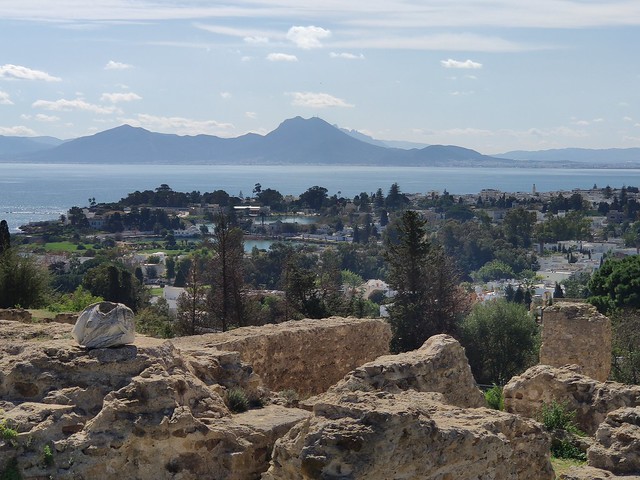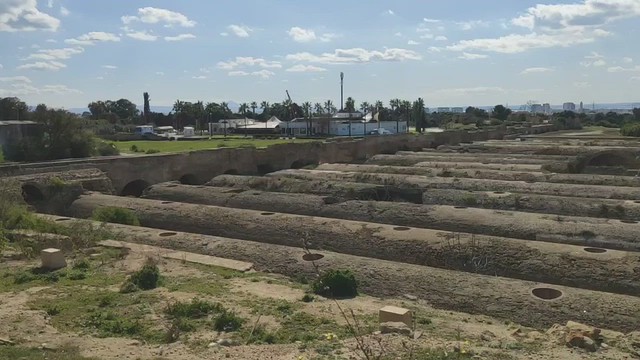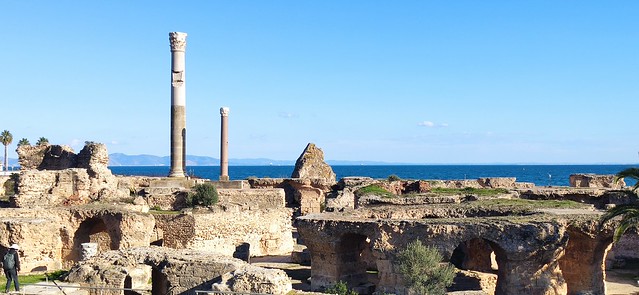We spent a day examining the result of the quarrying. The combo ticket covers eight sites (the museum is closed for remodeling). In addition, there is the circu (former Roman Circus, now a grassy field - we didn't go) and cistern complex. It took us all day, at a leisure pace, walking 10+ miles. The highlights were:
- Punic Port, The unique circular port was a major source of Rome's envy. We immediately realized that this port must have been the inspiration for the hexagonal port in Fiumicino (yet to be blogged). It wasn't until we saw the model of the port before we appreciated the depth of the envy.
- Roman Cisterns: The aqueduct brought water from the Zaghouan mountain some 60+ km away. Water is then stored in the cisterns, It was astounding to see such a scale of waterworks, still standing after however many incarnations of repurposing.
- Bath of Antonius: The complex must have been monumental, even with our recent trip to Baia (yet to be blogged), I was having trouble imagining, until I came across a diagram. It dawned on me that the Roman bath was the prototype to the Christian church, only much simplified. The cloister came from the palaestrum.
We rode the TGM to Carthage Salambo Station and walked to the Punic Tophet to buy our 8-site ticket for 12 Dinar, about 4 USD. This Tophet is a burial ground for stillborn children and sacrificed small animals. Below are the ticket booth, hours, and a few of the stone grave markers. Check out the different reliefs on the stones.



It's a short walk to the Punic and Roman Ports. The Naval Port with its circular shipyard and shipways located in a "middle island" caught our attention.




The view from Byrsa Hill back to the Punic Ports.

Ruins of the Punic Carthage atop Byrsa Hill. The Romans built a city center, forum, temples, etc., on top of the Punic city.


Some views of the pleasing but scant remains of the Roman Amphitheater. One is with me in an underground passage.



The Roman Cisterns were astounding. Note the aqueduct (at left in first below) that brought in H2O from 60+ kms away.




Below is a short 15-second video of the Cisterns. Again, you can spot the aqueduct at far left. link here.

The mostly reconstructed Roman Theater.

View to the sea from the ruins of a group of Roman Villas

Ancient Baths of Antoninus are on the Mediterranean.




An artist's "Reconstructed inside view of the baths. The analysis of the existing columns on the site figures in white."
Riding the train back to Tunis.




1 comment:
Interesting pictures!
Post a Comment